3 Days in Kyoto, Japan - Oct 2025
- Desmond

- 2 days ago
- 6 min read
Kyoto has been a place I've been meaning to come back to since I started blogging, as it seems to be more crowded year on year. A classier sister of Osaka, Kyoto is a very walkable city full of old Japan charms and elegance.

Transport
There are regularly trains between Osaka, Kaisai Airport and Kyoto and reservation is not really required depending on the season. Within the city you can go around with their expansive public transport and also Uber.
Accommodation
There are plenty of options in Japan as usual that fits all budgets. However as I am into design, I often look for accomodations with a bit more uniqueness in its architecture or aesthetics. On this occasion I have opted for the TSUGU Kyoto Sanjo by THE SHARE HOTELS.
Situated along Sanjo Dori, one of Kyoto’s main thoroughfares, find TSUGU KYOTO by The Share Hotels — a boutique hotel perfectly positioned in central Kyoto amongst the city’s key dining and shopping area and just a stones throw from Nishiki Market.
TSUGU is notably partly found inside a spectacular 108-year-old heritage-listed building, with its striking facade and structure taking visitors back to Japan’s early Taisho period where Westernisation slowly started to begin. Select guest rooms at TSUGU are found within the preserved building, or designed to overlook the registered tangible cultural heritage structure, built in 1914 and designed by Tatsuno Kataoka Architectural Office led by Kingo Tatsuno, one of Japan’s most famed early 20th century architects who designed some of the country’s most revered historic structures such as Tokyo Station and the Bank of Japan.
Other reasonably price options in the area are as below:
hotel tou nishinotōin kyōto (https://www.hotel-tou.com/)
Ace Hotel Kyoto (https://www.acehotel.com/kyoto/)
Dusit Thani Kyoto (https://www.dusit.com/dusitthani-kyoto/ja/)
Attractions
Higashiyama (Gion / Kiyomizu-dera / Hōkan-ji Temple)
Higashiyama-ku preserves the look and feel of feudal-era Japan in a wood-built historic quarter of narrow lanes lined with traditional pottery stores, tea houses, and restaurants for multi-course kaiseki meals. Centuries-old Zen and Shinto sites include lantern-lit Yasaka Shrine and hillside temple Kiyomizudera, which overlooks the city. Maruyama Park hosts festive hanami picnics under springtime cherry blossoms.
Arashiyama Bamboo Forest / Arashiyama Park Kameyama Area
Arashiyama Bamboo Forest (also called Sagano Bamboo Grove) is a stunning natural spot in Kyoto, Japan—tall moso bamboo stalks create a magical, green tunnel path that's super photogenic and serene. It's about 500m long, near Tenryu-ji Temple and Nonomiya Shrine, and free to visit 24/7. The rustling leaves are even one of Japan's official "soundscapes"! Best early morning to beat crowds. There is also a romantic sightseeing train that goes into the mountain if you are interested.
Kinkaku-ji
Kinkaku-ji (金閣寺, "Golden Pavilion") is a stunning Zen Buddhist temple in northern Kyoto, Japan—a UNESCO World Heritage site and one of the city's top icons. Built in the 1390s as a retirement villa for shogun Ashikaga Yoshimitsu, it was turned into a temple after his death in 1408. The star is its three-story pavilion covered in shimmering gold leaf (top two floors fully gilded), reflecting beautifully in the Kyoko-chi pond amid a serene Muromachi-style garden that changes with the seasons.
Fushimi Inari Taisha
Fushimi Inari Taisha is a famous Shinto shrine in southern Kyoto, Japan—dedicated to Inari, the god of rice, agriculture, and business success. It's the head shrine for over 30,000 Inari shrines nationwide, with origins back to 711 AD. The highlight? Thousands of vibrant vermilion torii gates (donated by businesses) forming "tunnels" along hiking trails up sacred Mount Inari (233m high, 2-3 hour round trip). Fox statues (Inari's messengers) are everywhere.
Nidec Kyoto Tower
Nidec Kyoto Tower (formerly just Kyoto Tower) is Kyoto's tallest structure at 131 meters—a modern observation landmark right across from JR Kyoto Station, built in 1964 to coincide with the Tokyo Olympics. Modeled after a lighthouse to "illuminate" the city, it offers a 360° panoramic view from its 100m-high deck (spot temples like Kiyomizu-dera and even Osaka on clear days).
teamLab Biovortex Kyoto
teamLab Biovortex Kyoto is the art collective's massive new permanent digital art museum (their biggest in Japan at 10,000+ sqm), opened October 7, 2025, in Minami-ku, just a 10-min walk southwest from Kyoto Station's Hachijo Exit. It's all about "Environmental Phenomena"—immersive works that shift with light, air, water, and your movements, blurring art and surroundings. Over 50 pieces, including debuts like floating bubble sculpture "Massless Amorphous Sculpture," sci-fi "Megaliths," and interactive zones like Athletics Forest (body-movement play) and Future Park (co-create drawings into merch). Dark, maze-like spaces with dynamic lights—expect 2-3 hours of mind-bending fun. Reservation Required.
2nd Street Kyoto Hachijo
A cute second hand store near Kyoto Station. Some decent luxury item finds but mostly focused on streetwear.
Restaurant and Nightlife
Kyoto is famous for traditional Japanese cuisine like shojin ryori (vegetarian Buddhist cooking) and obanzai (home-style dishes). Other specialties include yudofu (simmered tofu), yuba (tofu skin), saba-zushi (mackerel sushi), and matcha-flavored desserts. Be sure to try local items like yatsuhashi (a sweet) and kyo-yasai (Kyoto vegetables). However I don't personally like most of these things so I just went to what I like normally.
Sushi Ovino (鮨 おび乃)
One of my best finds this trip. I was originally very skeptical about this place as the website is very geared towards tourists. However upon visiting this place, it is very good value for money and honestly better than some of the more 'highly regarded' establishments. The technique and control they have over the ingridents were top notch and the staff and chef Kento has enough English to make this a very interactive experience. Booking is required.
Nishiki Market (錦市場)
400-year-old iconic market studded with stalls offering all manner of Japanese edibles. This place is very touristy but good for a casual lunch. The cooked food is very generic and noting special, however there are a few stalls that offer fresh seafood at reasonable prices.
RUFF
Japanese baked goods are often something that tourists miss out on and they are amazing! I will always reccomend a Curry Pan! The bread was incredibly soft with generous curry filling!
(THISIS)SHIZEN
(THISIS)SHIZEN is a trendy botanical café and shop in Kyoto's ShinPuhKan complex (near Karasuma Oike Station), blending nature, craft, and art since opening in 2020. It's famous for hyper-realistic edible flower bouquet ice creams—made with anko (sweet red bean paste), puffed rice, wagashi, and seasonal flavors like creamy roses or camellias.
Wagyu Sukiyaki Kyoto Chikarayama Shijo Kawaramachi Store
Wagyu Sukiyaki Kyoto Chikarayama Shijo Kawaramachi Store is a cozy spot in Kyoto's lively Kawaramachi area (2F/3F of Kyoto Wagyu-kan, 330-2 Inari-cho, Shimogyo Ward—just 1-min walk from Hankyu Kyoto Kawaramachi Station). Specializing in premium A5 Japanese Black wagyu beef sukiyaki (Kansai-style: thick-sliced, grilled in iron pots with warishita broth) and shabu-shabu, using varieties like Kobe, Chikarayama, and Fuji for melt-in-mouth marbling. Courses (~¥10,000-15,000) include seasonal veggies, Chamiton pork, even oysters—pair with sake or Yamazaki whiskey. It is a great introduction to people who have not tried Sukiyaki before. I recommend the Chikarayama and Fuji beef for your first time.
Niigata Katsudon Tarekatsu
A curry place in Kyoto. It was OK but really nothing to write home about. I wish the Pork Katsu was a bit thicker.
Kyoto Wamen Yukichi Honpo
Most overpriced Wagyu Ramen place this trip with mediocre food. Avoid at all cost.
Kyoto Yaoichi Honkan (京都八百一本館)
This is local super market which is great for a casual lunch take out and food type souvenir. Much better value than in the tourist markets.
Hello Dolly
Hello Dolly is a classic jazz bar in Kyoto's historic Pontocho Alley (Nakagyo Ward, near the Kamo River)—open since 1974 (50+ years strong), with a cozy, retro 1950s vibe: dark wood paneling, velvet seats, and Doris Day vibes. No live jazz daily, but weekends feature Japanese bands (sets at 8, 9:30, 11 PM), and classic recordings play otherwise. Cocktails, finger foods (~¥500-950), and a lounge overlooking the river—perfect for a chill night out.
Pontocho and Kamo River Bank
Pontocho is Kyoto's iconic narrow alley in the Nakagyo Ward, running parallel to the Kamo River from Shijo-dori to Sanjo-dori (just west of the river)—a historic geisha district since the Edo period (1700s), where maiko and geiko still perform. Lined with traditional machiya teahouses, lanterns glow at night for a magical vibe, blending old-world charm with buzzing restaurants (kaiseki, yakitori, izakayas) and bars. Stroll for people-watching, catch Kaburenjo Theater shows, or dine riverside—lively after dark, but respectful (no photos of geisha without permission).
Bar Liquor Museum
Bar Liquor Museum is a chain of cozy, affordable whisky bars in Kyoto (multiple spots like Pontocho, Honnoji, Karasuma Gojo, and Gion), known for their "museum"-like shelves of 100s of rare bottles—Japanese whiskies, bourbons, gins, and world spirits at fair prices. Great place for a night cap and people watch after dinner.
Tomomura
One of the higher rated ramen place in the area with decent side dishes available. It is close to the teamlab in Kyoto.

































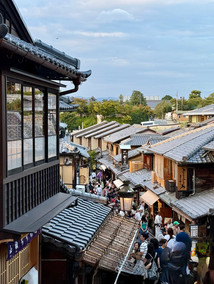





















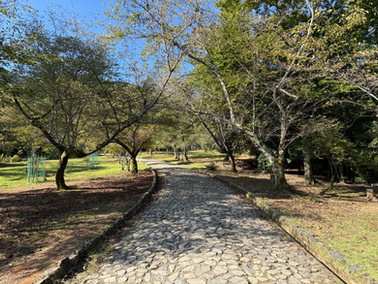

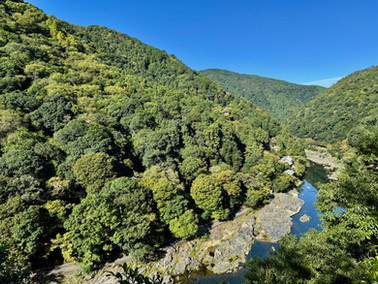

















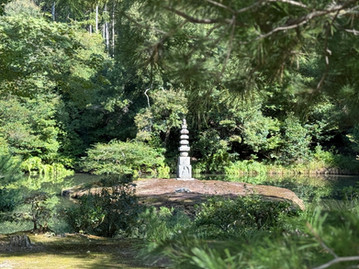



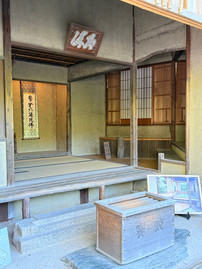













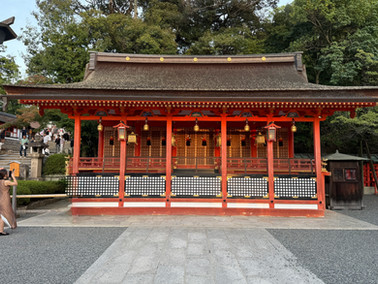











































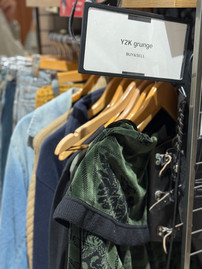

































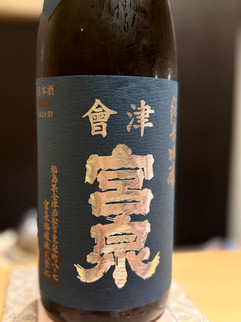



































































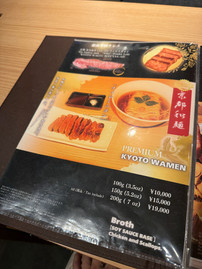































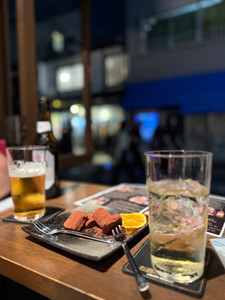






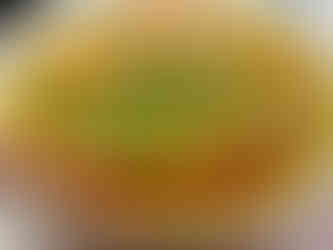






Comments